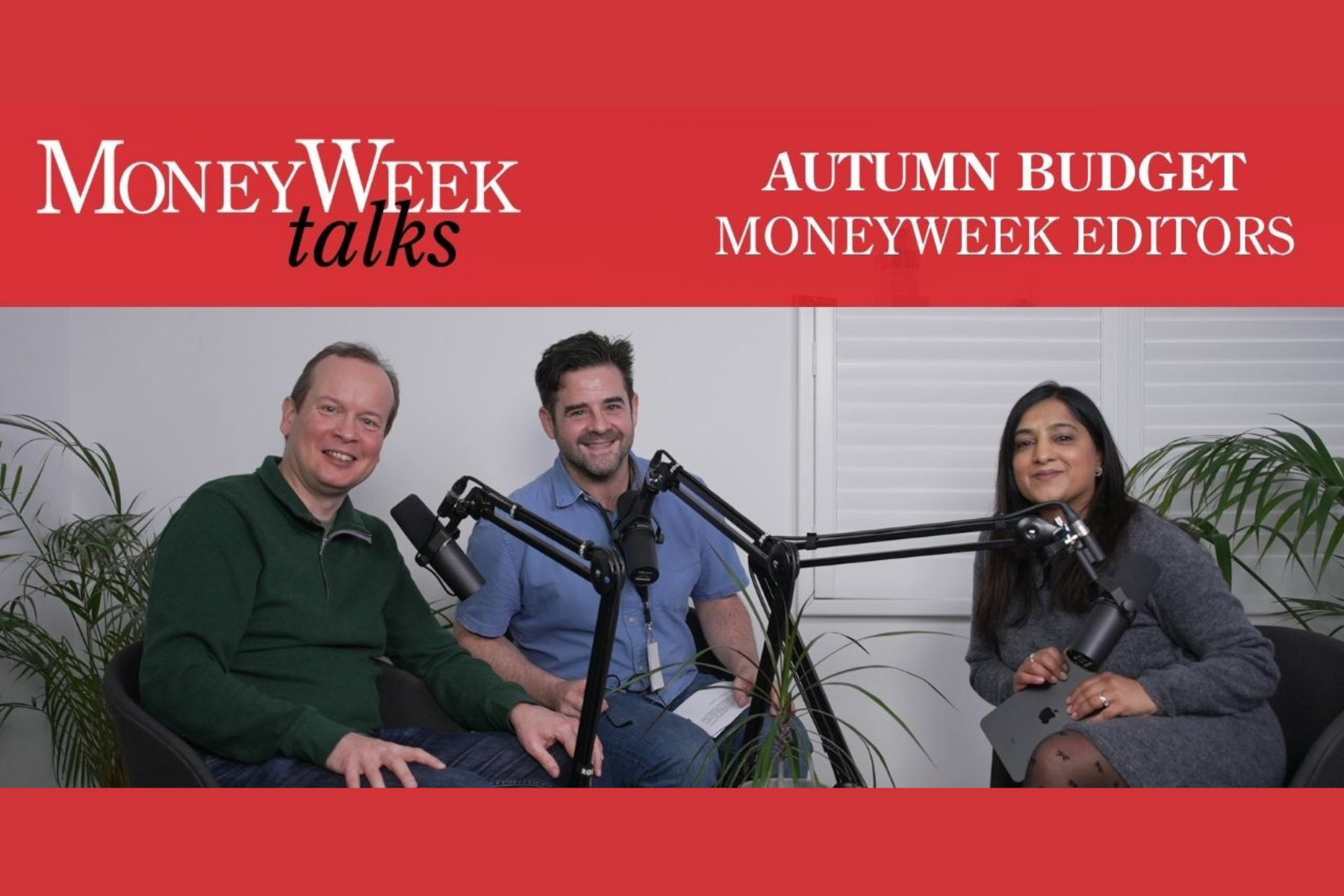Millions of over 50s fear pension investment risk – how should you position your portfolio?
To de-risk or not to de-risk, that is the question. Act too late and you could face irreversible losses. Move too early and miss out on significant gains that could transform your retirement.


Three-quarters of over 50s say risk is key when deciding what to do with their pension pot ahead of retirement, according to new research. How do the experts recommend positioning your portfolio in mid-life to manage market ups and downs?
Recent volatility driven by the prospect of global trade wars has highlighted how unpredictable financial markets can be when uncertainty abounds. For over 50s – with less time to recoup losses from invested pension pots – the consequences are particularly significant.
Two fifths (41%) of over 50s yet to retire expect their risk tolerance to reduce as they approach retirement, new research from Standard Life has found. The vast majority (76%) in a poll of 2,000 said risk is their biggest pre-retirement consideration – extrapolated to the wider UK that is millions of over 50s.
MoneyWeek
Subscribe to MoneyWeek today and get your first six magazine issues absolutely FREE

Sign up to Money Morning
Don't miss the latest investment and personal finances news, market analysis, plus money-saving tips with our free twice-daily newsletter
Don't miss the latest investment and personal finances news, market analysis, plus money-saving tips with our free twice-daily newsletter
But over 50s have a balancing act to perform – de-risk too late and there’s a bigger chance of having to draw down from a falling portfolio; de-risk too soon and the real risk becomes missing out on potential gains.
Claire Altman, managing director of individual retirement at Standard Life, said: “Attitudes towards risk will differ from person to person, but recent market volatility has clearly shown the impact this can have on an individual’s pension savings.”
“This is especially true for those who may be thinking about or already withdrawing their pension savings. During this time retirement savings are more vulnerable to any major losses which could have a knock-on impact on someone’s retirement lifestyle.”
Should I de-risk my pension portfolio in my 50s?
There was an old adage that people should “own their age in bonds”, meaning that when someone hit their 50s, half of their portfolio would be in lower risk bonds and half of their portfolio in riskier equities.
However, Jason Hollands, managing director at wealth adviser Evelyn Partners, pointed out that thinking can seem quite outdated now.
“It relates to a time when people were required to use their pension pots to make the one-off purchase of an annuity to provide them with a guaranteed income from life, and it also dates from a time when average life expectancy was lower than now,” he said.
Since the introduction of the pension freedom reforms in 2015 that allowed greater flexibility in how pensions can be accessed, most people with defined contribution pension now choose to remain invested and draw down on their pension pots, rather than use them to buy an annuity.
But annuity sales have been rising recently given high gilt yields have led to improved rates.
If your retirement plan is annuity focused, because you want more certainty over your future income, then de-risking your invested pension pot ahead of this critically important purchase makes a lot of sense, said Hollands.
“You do not want to be exposed to the risk of a stock market slump on the cusp of the point when you were about to retire only to find that you suddenly have far less capital to buy that all important annuity,” he said.
How can I balance investment risk with gains?
If the intention is to remain invested and focus on drawdown – making periodic withdrawals from your pension investment portfolio – your pension may need to fund a retirement that could last three decades (or more), particularly if you are in good health.
Hollands said: “In this case, de-risking too early by moving into low return assets is actually a risk as – unless you have a huge pension pot and other assets to fund your retirement.”
“It is likely you will need continued investment growth in the pension, at least in the earlier years of retirement, to ensure the pension pot is not drained too rapidly and eroded in real terms by inflation,” he added.
Ollie Saiman, co-founder of wealth manager Six Degrees, has a client base of multi-million pound business owners with an average age of 46. Many are thinking about what the next stage in life holds for them, but not necessarily retiring any time soon, he said, “so the question of when to de-risk is very real”.
One of the biggest risks Saiman sees is clients underestimating their life expectancy. That can lead to taking less investment risk than they require, increasing the risk of running out of money later in life.
“The data shows women, in particular, tend to underestimate their longevity – sometimes by ten years or more – and average life expectancy statistics often hide the extremes,” he said.
De-risking too early can feel prudent, he acknowledged, but in reality, it may quietly undermine long-term financial security.
"In our view, the key is balancing inflation-beating returns with an acceptable level of volatility – and that balance depends heavily on when you need to start drawing from your pension,” said Saiman.
It's rare, in Saiman’s experience, for anyone to need to make large cash withdrawals the moment they retire.
“We’re seeing more people in their 50s and 60s continuing to earn, through fractional work, part-time roles, or advisory and non-exec positions,” he said. “As a result, pensions are often used to supplement income, not replace it entirely, for at least the first decade of retirement.”
It is also worth remembering that the pension commencement lump sum (the tax-free 25%) doesn’t have to be taken all at once. By instead taking the tax-free lump sum in increments, more of your pension can remain invested and have a chance to continue growing.
Saiman said: “Put simply, most clients have a higher capacity for risk in their pension than they assume, and can afford to keep a meaningful allocation to equities for longer."
How should I invest my pension in my 50s?
Evelyn Partners – like most financial advice firms – construct portfolios around attitude to risk rather than age.
But to give you a very broad picture, Hollands said someone ten years ahead of retirement might typically be invested in the firm’s risk strategies four or five (see below), with equities still being the largest component of a portfolio.
Asset type | Balanced allocation (risk strategy four) | Medium risk growth allocation (risk strategy five) |
|---|---|---|
Equities | 55% | 67% |
Fixed income | 36% | 27% |
Alternatives | 7% | 5% |
Cash | 2% | 1% |
Total | 100% | 100% |
Portfolio four would be regarded as ‘balanced’ and five as ‘medium risk growth’.
Evelyn’s core risk models run from one (defensive) to seven (maximum growth), with the key swing factor being equity exposure.
Six Degrees’ clients’ pensions are similarly positioned – three quarters are allocated to 70% equities or higher, representing a ‘growth’ strategy’.
A quarter is allocated 60% to equities, representing a ‘balanced’ strategy. All are invested into index funds: equities, fixed income and cash only.
Hollands pointed out many people’s pensions will be in workplace default funds, and these are ‘one-size fits all’ funds which may not be optimal for those close to the point of retirement who are aiming to go into drawdown.
“Bringing together legacy pension pots in a self-invested personal pension (SIPP) portfolio that can be designed to suit your personal circumstances can make a lot of sense in your 50s,” he said.
When managing a SIPP, one effective way to reduce risk is to avoid large, one-off withdrawals, Saiman said. Instead, retirees can divide their income needs into smaller, regular withdrawals spread over the year.
“This approach effectively means you’re averaging out of the market rather than being exposed to a single market moment. It can significantly reduce the impact of short-term volatility on long-term outcomes,” he said.
Managing what is known as ‘sequencing risk’ in this way helps preserve the integrity of the portfolio, he added, “especially in those first critical years of retirement, when compounding works in reverse”.
Get the latest financial news, insights and expert analysis from our award-winning MoneyWeek team, to help you understand what really matters when it comes to your finances.
Laura Miller is an experienced financial and business journalist. Formerly on staff at the Daily Telegraph, her freelance work now appears in the money pages of all the national newspapers. She endeavours to make money issues easy to understand for everyone, and to do justice to the people who regularly trust her to tell their stories. She lives by the sea in Aberystwyth. You can find her tweeting @thatlaurawrites
-
 How much would it cost you to buy a house in Great Britain's happiest places?
How much would it cost you to buy a house in Great Britain's happiest places?Average asking prices for a property in the happiest place in Britain are below the national average
-
 How the Budget will hurt you: MoneyWeek Talks
How the Budget will hurt you: MoneyWeek TalksPodcast An Autumn budget podcast special episode, featuring MoneyWeek editors Kalpana Fitzpatrick, Andrew van Sickle and Cris Heaton.
